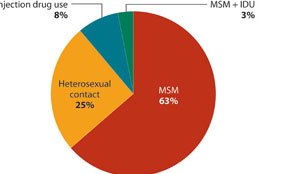 By MIRIAM ZIMBA-
By MIRIAM ZIMBA-
IMAGINE a Zambia with zero new HIV-infections due to increased prevention in interventions.
Currently, the Millennium Development Goals (MDG) target is to get to zero HIV-infections, zero, zero HIV related deaths and zero stigma.
The National AIDS Council NAC) is of the view that this seemingly an ambitious goal is possible by beginning with measures such as increasing the threshold of anti-retro viral drugs.
NAC director of programmes Harold Witola said in an interview that according to projections made, shifting the treatment threshold from CD4 350 to CD4 500 would avert about 170, 000 new infections by 2016.
“In addition, we will be able to avert about 60,000 deaths. And if this continued up to 2030, we would be able to avert about 360,000 new infections, and avert about 123,000 AIDS related deaths,” he said.
Dr Witola said this intervention once implemented would in the long term save the country from huge sums of public funds that are channeled towards placing 170,000 newly infected people on ART, and that the funds saved could be channeled towards other sectors of the economy.
“Imagine if we were able to avert 170,000 new infections, which means the costs of putting 170,000 people on life-long treatment would be
avoided, hence a lot of public funds saved.
“This is why we are calling it as an investment in health because monies that would have been used for treatment, can be channeled to other sectors,” he added.
Dr Witola said the annual costs for treatment of one patient on ART amounts to US$278 per patient, which he said includes the costs of medicines as well as diagnostic and laboratory tests.
He said, currently, the government, through the Ministry of Health and the Ministry of Community Development, Mother and Child Health are looking at ways of moving from the current threshold of CD4 Count of 350 fo r commencement of ART, to CD4 Count 500.
Dr Witola said through the evidence collected so far, Zambia has already made a decision to change treatment threshold for people living with HIV.
“There is nothing holding the country from implementing this. It is just a matter of policy, and once the Ministry of Health and the Ministry of Community Development, Mother and Child Health decide so, treatment centers will then abide by this threshold,” he said.
However, the most ideal way of fighting further prevention of HIV would be to place all people who test HIV positive on ART as it is done in developed countries.
Dr Witola said, this method, which is referred to as the Test and Treat, is one of the most effective ways of eliminating HIV infections.
He said this method would however require that everyone is tested, and that people found HIV positive are immediately put on ART, as a way of avoiding new infections of HIV.
He said in order for this intervention to work, it would require that all HIV positive people are placed on ART within the shortest possible time.
The principle behind the test and treat is that if properly implemented, there would be no more transmission of HIV, hence averting new infections.
Dr Witola however stated that the test and treat intervention would require huge financial resources.
“Firstly, you need to test everybody, in a very short space of time, and then have a lot of drugs in order to put a lot of people who test positive on treatment,” he said.
Even though, this could be done, there are still issues of adherence because these drugs are life-long. And there are concerns about drug fatigue among patients on ART because the lifelong treatment, once commenced, should be adhered to without fail.
“Imagine someone with a high CD4 count taking these drugs for life, when they still feel very healthy, the issue of fatigue also comes into play and these are issues that need to be addressed before such a policy can be implemented,” Dr Witola explained.
He pointed out the fears of developing a resistant of HIV, requiring more resources to treat which increases the costs of treatment.
He explained that before a country like Zambia can embark on such an intervention, there is need to weigh the pros and cons of the cost implications of such a measure.
NAC acting director general Elizabeth Choseni said during a recently held HIV and AIDS media symposium for journalists that there is need to re-focus HIV and AIDS interventions in order to attain zero new infections, and zero deaths as well as zero stigma and discrimination.
Ms Choseni implored the media to ensure that they play their role in promoting interventions aimed at attaining the three zeros.
She said holding of the HIV media symposium demonstrates the multi-sectoral approach in the HIV and AIDS response in the country.
The HIV media symposium was organised by NAC and the United Nations for Development Programme (UNDP), which drew the participation of media practitioners from both print and electronic.
Although the goal to get to zero by 2015 as prescribed in the MDG’s is ambitious, steps such as increasing the HIV ART treatment threshold from CD4 350 to CD4 500, is a milestone step towards attaining the three zeros.






